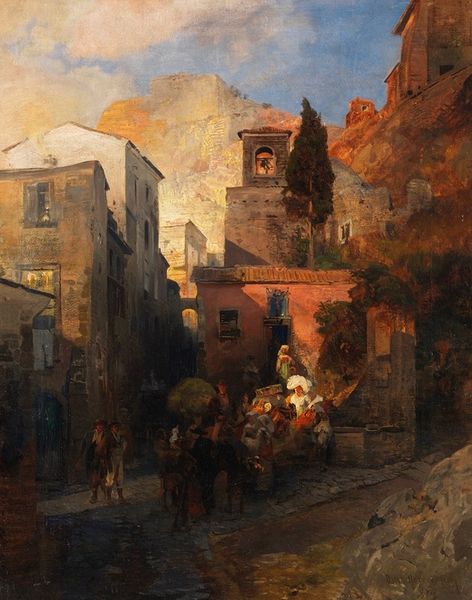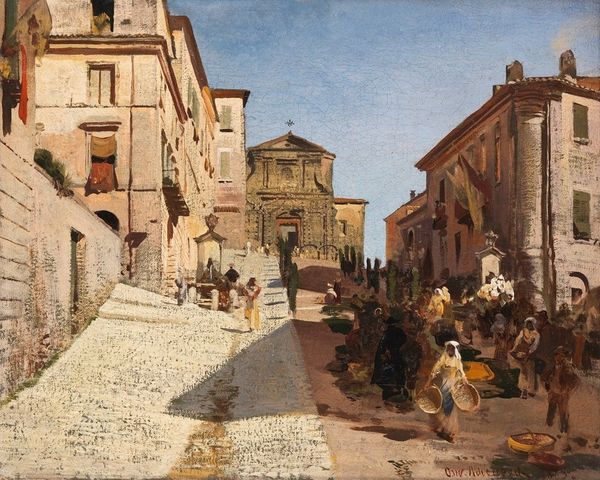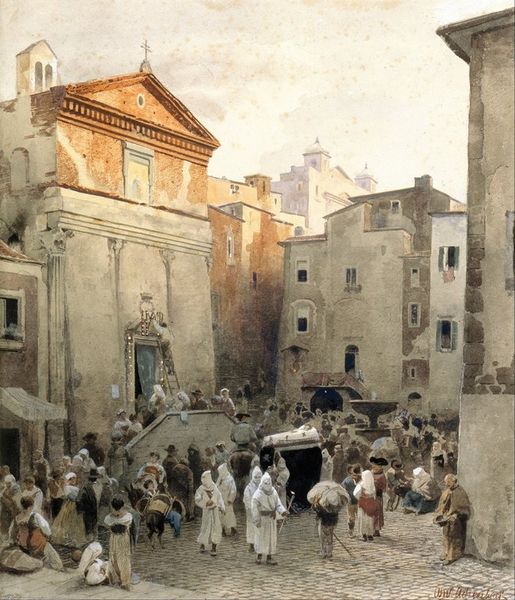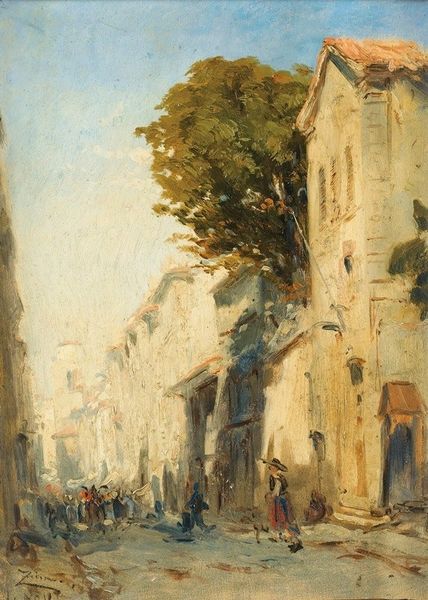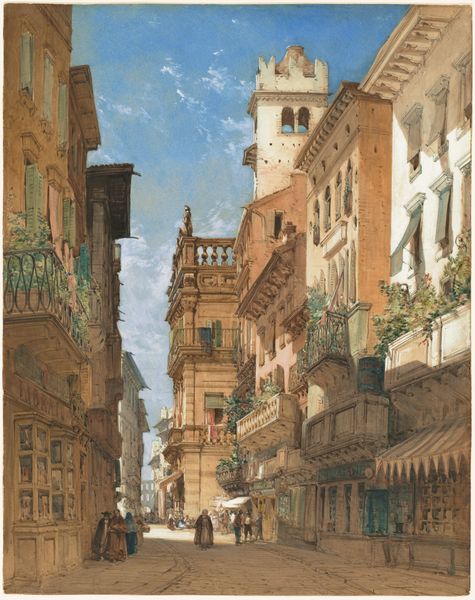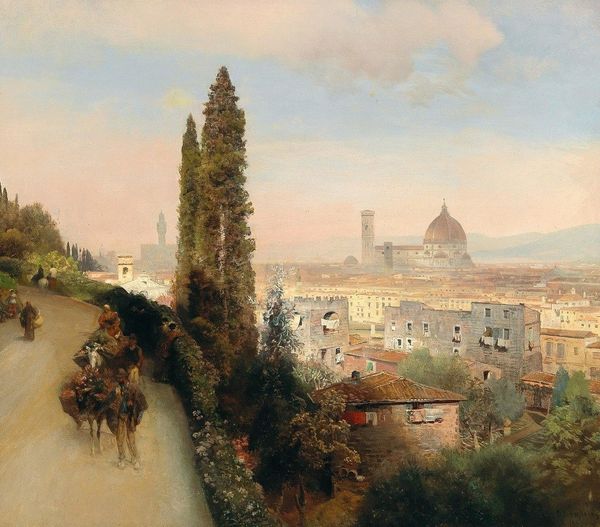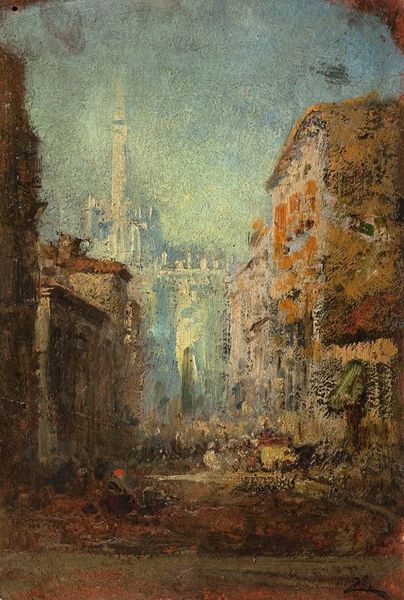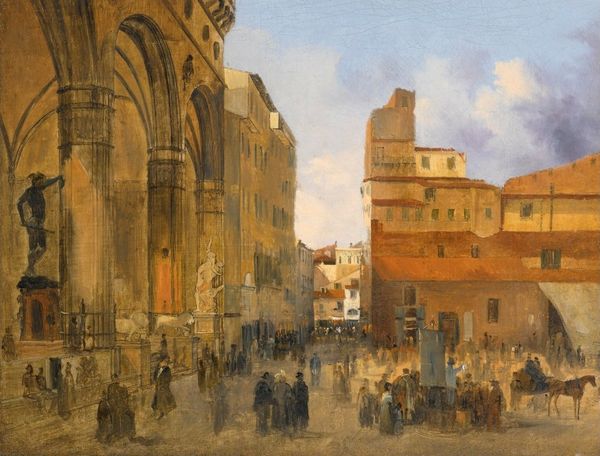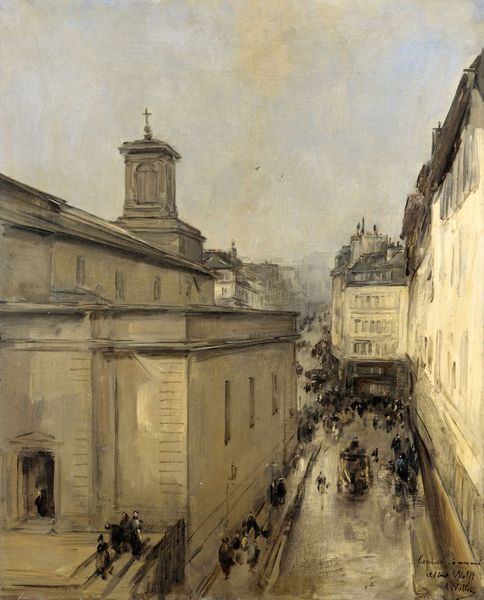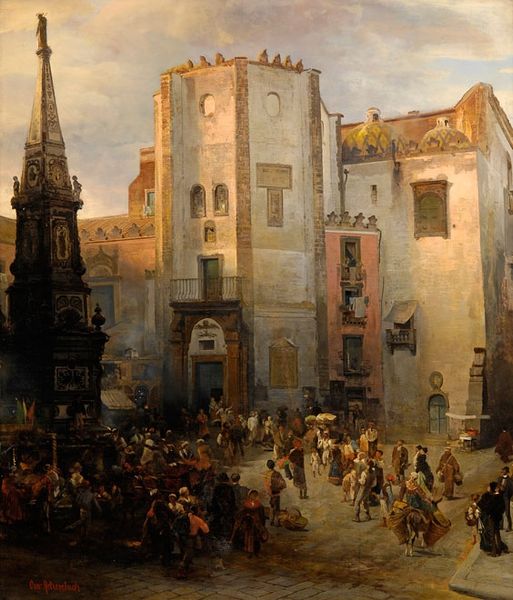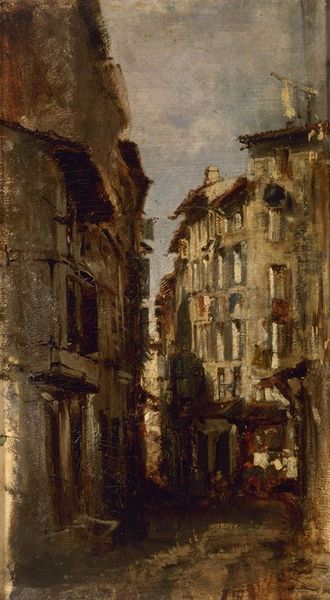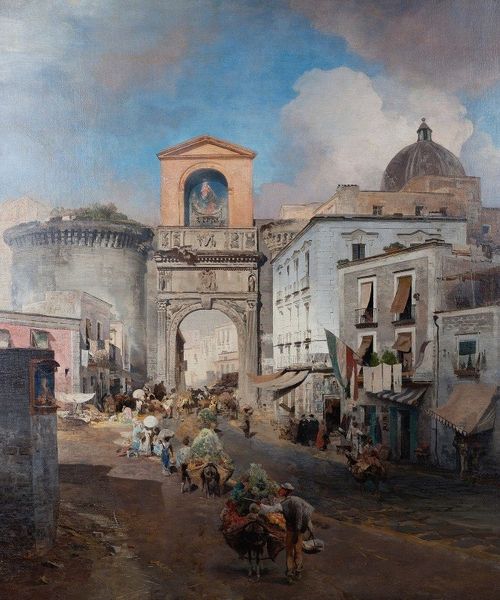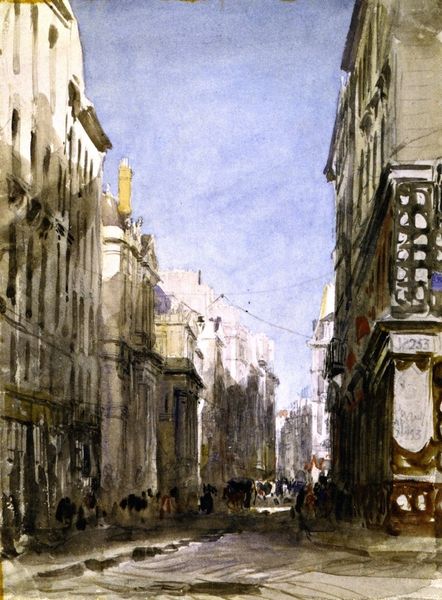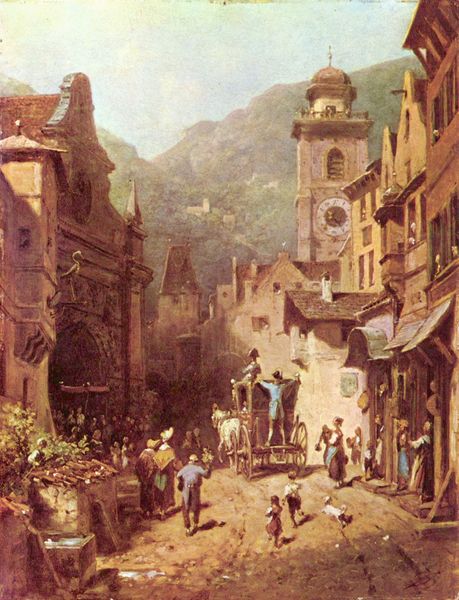
drawing, plein-air, oil-paint, watercolor, architecture
#
drawing
#
plein-air
#
oil-paint
#
landscape
#
oil painting
#
watercolor
#
romanticism
#
cityscape
#
genre-painting
#
history-painting
#
academic-art
#
street
#
watercolor
#
architecture
#
realism
#
building
Copyright: Public domain
Editor: Here we have Richard Parkes Bonington's "Corso Sant'Anastasia, Verona, with the Palace of Prince Maffei," painted in 1826. It looks like oil paint and watercolor on paper. The street scene is beautifully rendered, and there's a real sense of movement with the procession. What do you see in this piece? Curator: This artwork offers a glimpse into the intricate dance between power, religion, and social life in 19th-century Verona. Consider the street itself: architecture acting as a stage for religious expression. Who has access to those balconies, draped with banners? What does it mean for them to observe rather than participate? It reflects existing socio-economic stratifications. Bonington's decision to highlight that contrast becomes crucial. What commentary do you think he’s making? Editor: That's a fascinating way to look at it. I hadn't considered the balconies as symbols of power. Do you think his own background influenced that perspective? Curator: Absolutely. As an English artist depicting Italian society, his gaze is inherently that of an outsider. Was he romanticizing the scene, or subtly critiquing the social hierarchy? It's about the tensions within the artwork, how he chooses to represent it. Does the work celebrate the ritual or question the exclusive access to spectacle? Editor: So, looking beyond the pretty picture to understand the artist’s own social position and potential biases. Curator: Precisely. And how that position informs the choices he makes in representing power dynamics. That’s where the true richness of art history lies, wouldn’t you agree? Editor: Definitely! I'll never look at a cityscape the same way again. Thanks for illuminating all the details behind Bonington’s work.
Comments
No comments
Be the first to comment and join the conversation on the ultimate creative platform.
